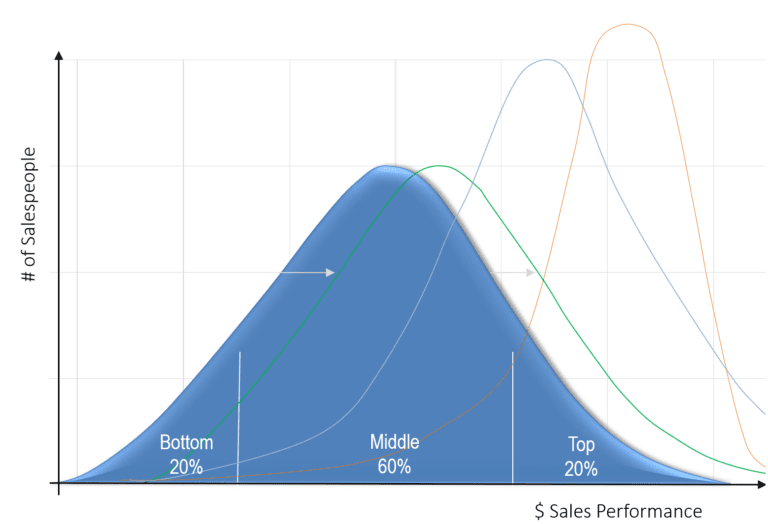A prospect or a potential customer doesn’t ideally make a purchase immediately after approaching your company. Even though our lives would be a lot simpler if that were the case but in practice, the process of converting a prospect into an actual purchasing customer takes a little more time. This process, which starts with the first interaction with a prospect and runs all the way till the actual purchase is made, is known as a sales pipeline. Analysing a sales pipeline allows you to predict the amount of business that’s expected to be done within a specific period of time.
Even if the idea of sales pipeline management sounds foreign to you, it’s likely that you already have one in place but you just don’t know it. Do you deal with prospected customers in a specific way? Do you follow a special protocol to close a sale? If yes, then your sales pipeline is already up and running.
Efficient management of the sales pipeline can guarantee increased sale success and in turn, increased revenue. When you scrutinise the whole process of dealing with a person who is interested in your product, you are able to find out areas of concern along with areas of strength.
Now that we all agree on the importance and need of a well-managed sales pipeline, let’s take a look at sales metrics – the numbers and figures that gives meaning to a sales pipeline. As a sales manager, you need to live and breathe sales metrics in order to manage your sales funnel in the finest way possible. The better aware you are of the averages that govern the sales funnel, the better you will be able to predict closable business and revenue. Here are a few amounts that you need to be aware of:
- The number of generated monthly leads per source
- The rate of conversion of the generated leads into actual pursuable opportunities
- The rate of conversion of the opportunities into actual closed deals
- Average size of the closed deal
- Average tenure/length of the sales cycle
- Total pursuable opportunities
Nothing matters more when we talk about sales pipelines than the correctness of collected data. Unauthentic data can inhibit the streamlining of the process and can lead to sales managers failing to give sound predictions.
An efficient sales pipeline depends on much more than just the metrics however; here’s our plan that can be followed to set one up:
- Who are your prospects?To manage a pipeline, you need to have one at first. Finding possible prospects/leads is step 1. There are many ways to generate leads and if you have a business model in place, we are guessing you already know how you are generating yours. The most basic tool to capture leads is via the lead capture form i.e. a form which can be put up on your website for visitors to fill with information. The contact information that these forms give should be treated with extra care because these people reached out to you directly and will be expecting to hear back from you. It’s a recommended practice to link the form to your company’s CRM software to ensure that no leads get lost.
- How much potential are we talking? According to a research conducted by Hubspot, around 60 percent of all purchasers prefer discussing price in the very first call.Quantitative information like total sales amount and the frequency of possible purchases over a specific time period is critical for your sales funnel. It’s worth noting here that you can’t go with a conjecture; you can’t estimate what the prospect has in mind regarding what they want to buy and to what extent they intend to keep in touch with the company. Another piece of information that you need to retrieve here is the purchasing policy of the client. Is price the only factor for the client while making a purchase? Does the client intend to make purchases every month? Or every year? Try to get as much out of the client, without making them lose their interest, as you can. It’s your duty to find out the possibility of them following through: This can be done by analysing the responsiveness of the client and their seriousness during the conversation.
- Who is calling the shots?Sometimes, you will be lucky and the person in contact with you, will be the actual decision maker. However, most of the time, it’s the executives who call the shots depending on the price and other determining factors that can be market-specific. However, asking a prospected client who their boss is can be an act of crossing the metaphorical line; so, you need to be clever. Let the contact know that since the purchase would set the company back a significant amount, executive approval is usually imperative and while you are “just talking” about it, ask them whether it’s the same in their case as well. It’s also a good idea to ask if the executives have given any special requirements for the purchase.
- Follow up:Your sales follow-up is arguably the most important part of the sales funnel. A recommended practice is to ensure that all promised follow-up tasks are documented in the CRM (against all clients and prospects). Be as descriptive as possible regarding the requirements and also record the estimated date by which the action has to be completed. Tracking, monitoring and (obviously) completing these actions astutely and within the agreed deadline should be your primary concern. Always be vigilant to reply if a customer makes a query.
- Measure and scrutinise everything:
Every prospect is different and you need to measure results for every single one of them. When you track the successes and failures for clients in a CRM, you are able to figure out how accurate your sales metrics are and what your closure rate is. By being able to perform accurate sales forecasting, you are able to predict revenue and make informed strategic decisions in the future.
After tracking the actions you took for every sale that you made, you have laid out a pathway to success in front of you. Take the path that helped you close deals repeatedly and avoid the actions that made you lose a potential client. The key here is to never settle on a success-yielding pathway, for an indefinite period of time, but to always be willing to adapt and improve with every new sale.
FINAL WORD:
An efficient sales pipeline can not only help in providing correct data regarding expected sales and revenue, but it can also help in improving the process of customer conversion. If the aforementioned steps are followed while implementing a sales pipeline, results are guaranteed to be of the right kind.
To find out how you can efficiently manage your sales pipeline with Act! sign up for a free demo or try Act! for free.



